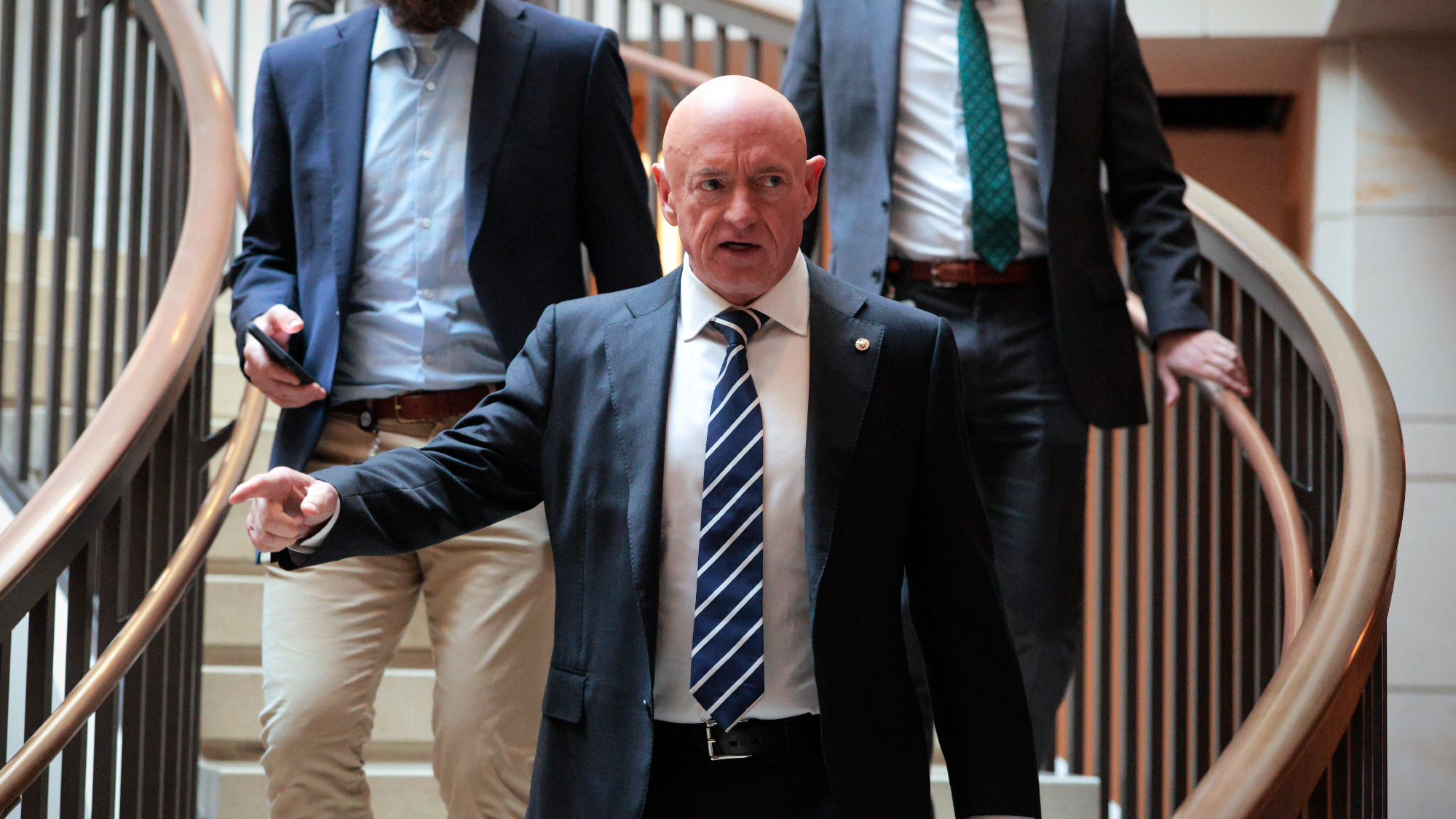Journalists of color were right about Trump. Why didn't we listen?
Why America's newsrooms must employ more minority writers


Jamelle Bouie tried to tell us. So did Nikole Hannah-Jones. Jelani Cobb spoke up, as did Vann Newkirk II, Adam Serwer, and Jenée Desmond-Harris.
Back in 2016, these journalists of color all used their platforms to send a warning about the racist undertones of Donald Trump's presidential candidacy. All too often these writers were dismissed as alarmists, or as race-obsessed practitioners of "identity politics." But as the events in Pittsburgh last weekend and those in Louisville last week have demonstrated, these writers were absolutely right.
This country needs more minority journalists in its newsrooms. And we fellow Americans need to do a better job of listening to them.
The Week
Escape your echo chamber. Get the facts behind the news, plus analysis from multiple perspectives.

Sign up for The Week's Free Newsletters
From our morning news briefing to a weekly Good News Newsletter, get the best of The Week delivered directly to your inbox.
From our morning news briefing to a weekly Good News Newsletter, get the best of The Week delivered directly to your inbox.
Is this really an issue? After all, the writers I've named here work or have worked for places like The New York Times, Slate, The New Yorker, and The Atlantic — all of them prestige publications. Most of them have widespread followings on social media. Hannah-Jones was named a MacArthur Genius in 2017.
But you don't have to look much beyond the surface to detect a real problem with minority representation in newsrooms. A 2017 survey showed that just one in six American newsroom employees are racial minorities — and the situation is even worse for women of color. That's not good enough: America needs these voices. Journalists of color can and often do point out America's blind spots.
Paging through Bouie's 2015 and 2016 dispatches for Slate, one is struck by their stubborn prescience, informed by a deep familiarity with this country's history and a refusal to view that history through rose-colored glasses.
"We can't just dismiss Trump as entertainment," Bouie wrote in 2015, when many pundits were doing just that. Like segregationist politician George Wallace, Bouie wrote, "Trump is an eruption of the ugliest forces in American life, at turns authoritarian, like the Louisiana populist Huey Long, or outright fascistic, like the Second Ku Klux Klan. And like all of the above, he's brought the background prejudice of American life to the forefront of our politics, and opened the door to even worse rhetoric and action."
A free daily email with the biggest news stories of the day – and the best features from TheWeek.com
In the hours after the 2016 election that gave Trump the White House, Bouie was even more blunt: "I see a man who empowered white nationalists and won."
Cobb, writing in The New Yorker on the eve of the election, was similarly uncompromising: "The problem of Trump is not simply that his opinions far exceed his knowledge; it's that what he does know is so hostile to democracy, not only in the Republican Party or the United States but in the world." Having now watched Trump make nice with dictators ranging from Vladimir Putin to Rodrigo Duterte in the Philippines, who can now doubt it?
Perhaps because of their racial backgrounds, these journalists haven't necessarily been inclined toward a gauzy view of America's past, and they haven't been immersed in the idea of American exceptionalism the way many of their white counterparts have. As a result, they've often been able to view and describe events with greater clarity than many of their colleagues.
And research since the election has borne out the reporting and commentary of these journalists, debunking the idea that "economic anxiety" powered Trump's victory, and offering evidence that Republican voters in 2016 were instead motivated primarily by the ugly forces of racism and sexism. That's not a message that has often been welcomed in mainstream journalism.
"Donald Trump won the thing by appealing to white voters, and running an unabashed campaign of bigotry, racism, xenophobia, and other odds and ends of nastiness," Newkirk wrote after the election, reflecting on his family's history of dealing with racism. "This is who we are."
Why didn't we heed the warnings of minority journalists?
Part of the problem, surely, is that race is complicated: Some of Trump's voters did indeed support Barack Obama during the previous two elections. Some of it was about persuasion: It's hard to win the support of white voters when you're calling them racist. And some of it was simply strategic: Many observers were convinced after 2016 that white working class voters were the key to any election victory, and urged Democrats to play down the concerns of racial minorities to make the appeal.
But the wake-up calls from minority journalists have only become more prescient as time marches on. The problems of Trump's presidency don't go away if you try to ignore them, and these journalists have, by and large, refused to do any ignoring.
Representation matters. It's incumbent upon editors to do more to make sure their newsrooms look like their communities. It's up to us in the audience to make sure that we hear and encourage the minority journalists already being published. They were right about Trump. If only we'd listened.
Editor's note: This article has been slightly revised since it was first published.
Joel Mathis is a writer with 30 years of newspaper and online journalism experience. His work also regularly appears in National Geographic and The Kansas City Star. His awards include best online commentary at the Online News Association and (twice) at the City and Regional Magazine Association.
-
 Trump HHS slashes advised child vaccinations
Trump HHS slashes advised child vaccinationsSpeed Read In a widely condemned move, the CDC will now recommend that children get vaccinated against 11 communicable diseases, not 17
-
 Hegseth moves to demote Sen. Kelly over video
Hegseth moves to demote Sen. Kelly over videospeed read Retired Navy fighter pilot Mark Kelly appeared in a video reminding military service members that they can ‘refuse illegal orders’
-
 Delcy Rodríguez: Maduro’s second in command now running Venezuela
Delcy Rodríguez: Maduro’s second in command now running VenezuelaIn the Spotlight Rodríguez has held positions of power throughout the country
-
 Bari Weiss’ ‘60 Minutes’ scandal is about more than one report
Bari Weiss’ ‘60 Minutes’ scandal is about more than one reportIN THE SPOTLIGHT By blocking an approved segment on a controversial prison holding US deportees in El Salvador, the editor-in-chief of CBS News has become the main story
-
 Has Zohran Mamdani shown the Democrats how to win again?
Has Zohran Mamdani shown the Democrats how to win again?Today’s Big Question New York City mayoral election touted as victory for left-wing populists but moderate centrist wins elsewhere present more complex path for Democratic Party
-
 Millions turn out for anti-Trump ‘No Kings’ rallies
Millions turn out for anti-Trump ‘No Kings’ ralliesSpeed Read An estimated 7 million people participated, 2 million more than at the first ‘No Kings’ protest in June
-
 Ghislaine Maxwell: angling for a Trump pardon
Ghislaine Maxwell: angling for a Trump pardonTalking Point Convicted sex trafficker's testimony could shed new light on president's links to Jeffrey Epstein
-
 The last words and final moments of 40 presidents
The last words and final moments of 40 presidentsThe Explainer Some are eloquent quotes worthy of the holders of the highest office in the nation, and others... aren't
-
 The JFK files: the truth at last?
The JFK files: the truth at last?In The Spotlight More than 64,000 previously classified documents relating the 1963 assassination of John F. Kennedy have been released by the Trump administration
-
 'Seriously, not literally': how should the world take Donald Trump?
'Seriously, not literally': how should the world take Donald Trump?Today's big question White House rhetoric and reality look likely to become increasingly blurred
-
 Will Trump's 'madman' strategy pay off?
Will Trump's 'madman' strategy pay off?Today's Big Question Incoming US president likes to seem unpredictable but, this time round, world leaders could be wise to his playbook
